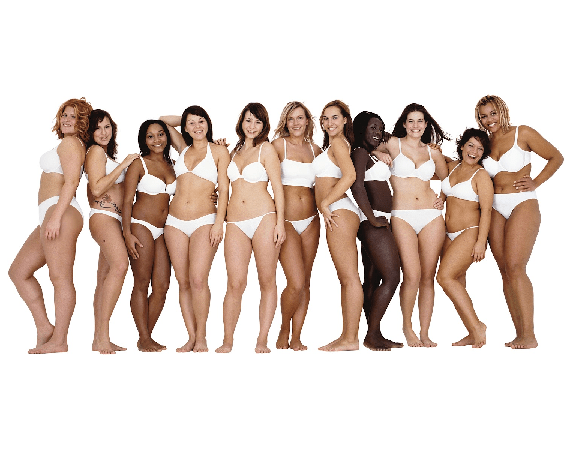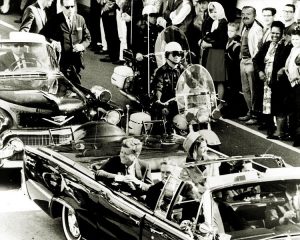The beauty industry is one that has dominated in terms of sales and marketing for decades. It is a field that many are attracted to, yet few take the time to understand how their projected images affect one’s self-image. Though, as many say, “beauty is in the eye of the beholder,” one company realized that beauty lies within all.
In 2004, Dove launched the Campaign for Real Beauty, which was meant to broaden the narrow view of beauty within society.1 Before the release of the Campaign for Real Beauty, Dove attempted to highlight the creamy, moisturizing feel that defined the soap brand by emphasizing the beauty in pampering oneself – oftentimes depicting a beautiful, thin woman, with red lipstick and painted nails. Taking a drastic risk in their marketing strategy, Dove sought to promote a new idea of beauty; they did so by using real women whose looks and weight were far different from the typical model—and it was a smashing success.2 But this success would not have been possible without the creative minds behind the project and the annihilating of what society says beauty should be.

For many decades, the beauty industry has marketed its products with images of the newest, most glamorous, most chic new looks for individuals to try. People love the process of making themselves feel beautiful, and tend to jump at the newest, most popular products to arrive in the market. Specifically, the beauty industry targets women by appealing to the “ideal” image of beauty that is popular at that particular point in time. The most used approach they take is in convincing women that what is most important about them is the way they look. The most common ideal of beauty (especially prevalent since the post-war 1950s) dominant in the minds of many today, is a tall, thin woman who is caked with flawless makeup with silky hair and a straight, white smile. Beauty is not only something that women feed off of, but it has become something people look to to define their own self-confidence. Magazines, games, and social media alike are doused with unrealistic portrayals of beauty. Though there is a high awareness of the impact that media’s idealization of thinness has on women’s health, the industry remains strict to a narrow range of cultural images of attractiveness.3 Before the Dove Campaign for Real Beauty was launched, women, for many years, became used to seeing themselves as being “less-than” that of others. In adapting to change, the beauty industry follows closely the shifting trends of the times. For example, the 1950s was characterized by rolled bangs and winged eyeliner, the 1980s by bold eye shadow and crimped hair, and the 2000s by fake tans and lip gloss.4 In following these trends, women have long adapted to the societal standard of beauty in an attempt to better fit in. These stereotypical views of the ideal woman is what not only feeds the minds of young girls, but it wrecks the body images of millions of women who don’t see themselves as beautiful. In general, the beauty industry tends to feed the minds of many with their own definition of beauty.
One of the key creators and marketing geniuses behind the Campaign for Real Beauty was Joah Santos. As the Chief Creative Officer and founder of NYLON (a multi-platform media company), Santos paved the way for the creative advertising techniques that were used in a multitude of famous ads. Santos became widely known after his making of the P.O.V. (purpose, originality, value) marketing strategy, which was first used to create the Dove Campaign for Real Beauty.5 Within this strategy, he hoped to simplify marketing by giving value to the content of an ad. Content, he explains, gives a story to the brand; the effect of the story is what matters most. There must be a link between a product and the brand’s purpose in order for the technique to make sense. This, in turn, allows the company to build up its credibility.
His focus on evolving a brand based on its story was revolutionary—he set the stage for perhaps the greatest campaign of the twenty-first century. In addition to this, Santos’ ideas led to the Dove Real Beauty Sketches, which was a short film led by Hugo Viega. Viega, a Portuguese copywriter, focused on the concept of risk-taking in his creative, rather than figuring out what would best sell. In his commercial campaign for Dove, Viega hoped to show women that they are more beautiful than they think. To do so, he had various women describe themselves to a sketch artist who could not see them. The sketch artist then drew images of those same women, as described by strangers who had met them the day before. When these images were compared, the stranger’s image was by far more flattering and accurate for every woman who participated. Not only did this video go viral in 2013, but it is said to be one of the most powerful and thought-provoking films Dove has ever released.6 These two men had an enormous role within the Campaign for Real Beauty, with their “test-and-learn” strategy taking them a long way. Ultimately, they sought to express to women that their imperfections do not define who they are. Without them, the campaign would not have grown into what it is today.
The conversation of beauty in today’s society is one that is standardized across the board. The projected images of beauty within media and advertisements alike are what influence the way women see themselves in relation to the rest of the world. These idealized images that are prevalent in advertising are what make consumers feel that they must strive for some unattainable goal of beauty. This, in turn, makes them feel threatened in a way that has a negative effect on their self-esteem.7
Humans in general have a tendency to compare some aspect of the self to that of others, and this is known as social comparison. Social comparisons take place when individuals are heavily influenced by their social environment.8 Projecting ultra-thin models as a beauty ideal comes with its costs. The general conclusion among researchers is that the exposure to thinness-depicting media is related to greater body dissatisfaction, lower body self-esteem, and self-objectification, especially among young girls.9 Social comparison allows one to understand the projected symbols from media, and how they tend to lower women’s self-assurance in society. The advertising industry routinely utilizes the theory to sell beauty products.10 Men, too, are affected by such standards of beauty; seeing such projected attributes in media, men feel as if they cannot reach those standards, ultimately becoming dissatisfied with their own image.11 Societal standards of beauty have been, and will likely always be, a driving factor in the way individuals view themselves.

In 2004, Dove, in conjunction with the Downing Street Group (a research consulting firm), decided to conduct a massive research experiment to verify the hypothesis that women tend to view themselves as less than optimal. For this, leaders of the Campaign for Real Beauty traveled to ten different countries, surveying a total of three thousand women to find out how they felt about their own appearance. In confirmation of Dove’s guess, the research concluded that merely two percent of women define themselves as being beautiful, and only nine percent described themselves as being attractive.12
The Dove Campaign for Real Beauty was one that was groundbreaking, revolutionary, and bold. Dove began as a company creating moisturizing beauty bars, and evolved into one that insists that women be comfortable in their own skin. This campaign not only encouraged confidence, but it widened the narrow view of what is considered “beautiful” by societal standards (i.e. thinness, fair skin, etc.).
Feminism (the advocacy of women’s equality in society) is a concept that is present in the Dove Campaign for Real Beauty. From the 1960s on, women have empowered themselves to advocate for their own definitions of beauty, not allowing a patriarchal society to define them. For too long, women were told to accept their roles in society and live domestic lives as housewives and caretakers. There has been a long effort to include emancipatory ideals in marketing campaigns, most often met with little transformation.13 To put it simply, the fight for all body types, skin tones, and hair types to be expressed equally in media campaigns has been long fought, yet most advertisers stick to stereotype models, lacking diversified representation. Before the 1960s, gender roles were reinforced by mass media and popular culture. However, after WWII, because women made up a large percentage of the postwar labor force, things began to change for women and their roles in society.14 Even in the 1950s, women began to take on new roles in society even as they were encouraged to play traditional roles. These new roles represented the beginning of women breaking away from the conformist ideals of that time period.
In relation to the twenty-first century, women have continued to advocate equality via feminist activism. The Dove Campaign for Real Beauty is a prime example of this, as it pulls away from the commonplace, stereotypical view of women in society today. In using “feminist consumerism,” the Campaign for Real Beauty has the power to disrupt gender norms with its engagement in grassroots activism, as well as in its critiques of the beauty industry.15

In all, the Dove Campaign for Real Beauty is one that has set the stage for groundbreaking change in the minds of women in today’s society. Not only have some beauty companies restructured their use of models and media strategies, but the idea of using “real women” has been popularized. In kicking off a conversation of women’s roles in society’s standards of beauty, the campaign reframed the very idea of female attractiveness. The empowerment of women to be confident in their own skin is what drove this campaign; it not only celebrated the natural beauty of women around the world, but it reinforced the idea that societal standards do not define who you are.
- Encyclopedia of Major Marketing Campaigns, 2007, s.v. “Unilever PLC,” by Jonathan Kolstad and Judson Knight. ↵
- Encyclopedia of Major Marketing Campaigns, 2007, s.v. “Unilever PLC,” by Jonathan Kolstad and Judson Knight. ↵
- Sarah Grogan, Body Image : Understanding Body Dissatisfaction in Men, Women and Children (London: Routledge, 2008), 11-12. ↵
- Fashion, 2015, s.v. “Beauty by the Decade: The Hair and Makeup Trends We Got from Each Era,” by Sarah Harris. ↵
- Revolvy, 2013, s.v. “Dove Real Beauty Sketches.” ↵
- Revolvy, 2013, s.v. “Dove Real Beauty Sketches.” ↵
- Encyclopedia of Gender in Media, 2012, s.v. “Social Comparison Theory,” by Neil Alperstein. ↵
- Encyclopedia of Gender in Media, 2012, s.v. “Social Comparison Theory,” by Neil Alperstein. ↵
- Kimberly Bissell and Amy Rask, “Real women on real beauty: Self-discrepancy, internalisation of the thin ideal, and perceptions of attractiveness and thinness in Dove’s Campaign for Real Beauty,” International Journal Of Advertising 29, no. 4 (November 2010): 644. ↵
- Donnalyn Pompper, Rhetoric of femininity: female body image, media, and gender role stress/conflict (Lanham: Lexington Books, 2017), 15. ↵
- Encyclopedia of Gender in Media, 2012, s.v. “Social Comparison Theory,” by Neil Alperstein. ↵
- Encyclopedia of Major Marketing Campaigns, 2007, s.v. “Unilever PLC,” by Jonathan Kolstad and Judson Knight. ↵
- Josée Johnston and Judith Taylor, “Feminist Consumerism and Fat Activists: A Comparative Study of Grassroots Activism and the Dove Real Beauty Campaign,” Signs 33, no. 4 (2008): 15. ↵
- Khan Academy, 2016, s.v. “Women in the 1950s,” by Michelle Getchell. ↵
- Josée Johnston and Judith Taylor, “Feminist Consumerism and Fat Activists: A Comparative Study of Grassroots Activism and the Dove Real Beauty Campaign,” Signs 33, no. 4 (2008): 941-66. ↵




95 comments
Daniela Cardona
The Dove beauty campaign has been one of my favorite for a very long time. The importance of empowering women, especially all different body types and races, is so essential nowadays. At the time, the campaign was pretty revolutionary. It has set the stage for a wider usage of “real woman” models and spokeswomen as well as created a wave of confidence through those it touches.The best part of the campaign is the ability to look in the eyes of others and realize how harsh of standards we tend to hold ourselves up to. Another company with campaigns similar to this one is Aerie. In their ads they feature women of all different shapes, sizes, colors and even handicaps.
Sarah Nguyen
As I take random breaks from social media, I didn’t know Dove had The Campaign for Real Beauty! I loved getting to read about this, and seeing just what and who influenced this campaign. The idea for woman to be “comfortable in their own skin” is breathtaking, and it’s interesting to see how their is a move for natural beauty in all shapes, sizes, color, and for people in general to be happy with who they are. Great article, I like how the author included a picture of one of Dove’s old campaigns. It would have been awesome to see more pictures relating to the advertisements of unrealistic expectations on women compared to Dove’s campaign. Great job!
Maisie Favila
It’s very noticeable that women in the advertisement business are sold to be something different than they truly are. I think it was a good choice for Dove to get these models with various sizes and ethnicities to promote their products. More women would feel comfortable buying beauty products that they can relate to on a personal level. I loved this article because it reminded me of female empowerment within society.
Lamont Traylor
Woman have always been categorized because of their images and this article explains what a famous company such as dove has done to improve the worlds view of what beautiful is. The article also exposes how visions of beauty differed over time. One thing that really stood out to me in the article was how it talked about women not seeing themselves as beautiful and this is something that can be seen everywhere in the world.
Yadira Chavez
This was such a heart-warming read! Dove really surprised me when the campaign first arose and became a trending topic. Many companies that focus on women’s health, clothing, and makeup go the easy route in hiring models that look the best with their products. The sad truth, however, is that these women don’t represent the greater majority of who will be using the products. Women don’t need to be ashamed that they do not look like a model, Dove is correct in embracing flaws! The Campaign for Real Beauty is something that i will always support!
Jonathan Arreola
I remember encountering the Dove Real Beauty Sketches on social media a while back, and after reading this article I think Dove made a great company decision by following this plan. First of all, the base purpose of this new advertising technique is good natured—an attempt to make all women feel beautiful. It warms my heart to know that a multi-billion dollar company cares enough about society to try and shift the narrow view of beauty. Second of all, by making products that make all women feel beautiful, they increase their sales by reaching out to many more customers and perhaps even stealing the customers from other companies that convince women the need to buy their product in order to feel beautiful. The Campaign for Real Beauty was a win-win tactic.
Sofia Andrade
Before reading this article, I had heard of the dove campaign and am well informed in this topic for I did a research paper on Women’s beauty standards. I was familiar with the Dove campaign but did not know how it came to be. It was interesting to gain more insight into how this campaign got started and who started it.
Esperanza Rojas
This particular topic was fun to read. When this commercial came out, in 2004, I was only 4 years old, but was never aware of exactly what it meant to the industry. Not until just a few years later, I saw another commercial from Dove, not using just a model that was in a very different weight category, but one that was a different race. That fact itself was a huge factor for me, seeing that I fit that very category this same woman did. This topic is very controversial and talked about among the country, now it is very typical to see models that are of a different race or in a different weight category, and is such a relief to see that this is not a topic that is ignored and is actually evolving into being the norm.
Nathalie Herrera
I think this article and overall subject is extremely important and relatable to today. The Dove Campaign, “Real Beauty,” magnified the importance of self love and acceptance. This article does not fail to mention of how society has carved out the ideal, “beautiful woman.” Yet, contrary to this, Dove has empowered many women with their campaign and have torn down that image of “beauty.” Very interesting and important read!
Rylie Kieny
It seems more and more now that adds like these are popping up in stores all around America. We now see women who wouldn’t be usually categorized as a model all over adds and billboards. A company known as aerie has even featured women who has what some may consider disabilities. Seen companies all over be more inclusive to all shapes and sizes is an awesome thing that must continue. Its one thing to see these adds and its another to hear the stories behind them. This article did a great job pointing out why adds like these are so important along with those behind the ideas. Its easy to see an add and forgot all he people who are involved in the creation of it. It just shows that no matter what profession you do you have the ability to change the world. Many times the models are given all the credit and although they should receive some it all starts with the minds who push the ideas. We need more people in marketing to push for adds like these so that we can all feel accepted in our own skin.